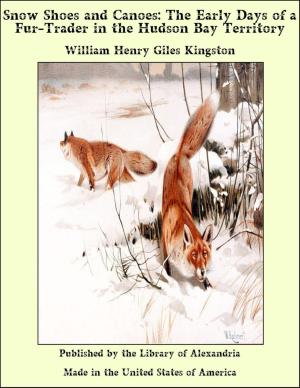Vikings of the Pacific: The Adventures of the Explorers who Came from the West, Eastward
Nonfiction, Religion & Spirituality, New Age, History, Fiction & Literature| Author: | Agnes Christina Laut | ISBN: | 9781465574473 |
| Publisher: | Library of Alexandria | Publication: | July 29, 2009 |
| Imprint: | Library of Alexandria | Language: | English |
| Author: | Agnes Christina Laut |
| ISBN: | 9781465574473 |
| Publisher: | Library of Alexandria |
| Publication: | July 29, 2009 |
| Imprint: | Library of Alexandria |
| Language: | English |
At the very time the early explorers of New France were pressing from the east, westward, a tide of adventure had set across Siberia and the Pacific from the west, eastward. Carrier and Champlain of New France in the east have their counterparts and contemporaries on the Pacific coast of America in Francis Drake, the English pirate on the coast of California, and in Staduchin and Deshneff and other Cossack plunderers of the North Pacific, whose rickety keels first ploughed a furrow over the trackless sea out from Asia. Marquette, Jolliet and La Salle—backed by the prestige of the French government are not unlike the English navigators, Cook and Vancouver, sent out by the English Admiralty. Radisson, privateer and adventurer, might find counterpart on the Pacific coast in either Gray, the discoverer of the Columbia, or Ledyard, whose ill-fated, wildcat plans resulted in the Lewis and Clark expedition. Bering was contemporaneous with La Vérendrye; and so the comparison might be carried on between Benyowsky, the Polish pirate of the Pacific, or the Outlaw Hunters of Russia, and the famous buccaneers of the eastern Spanish Main. The main point is—that both tides of adventure, from the east, westward, from the west, eastward, met, and clashed, and finally coalesced in the great fur trade, that won the West. The Spaniards of the Southwest—even when they extended their explorations into the Northwest—have not been included in this volume, for the simple reason they would require a volume by themselves. Also, their aims as explorers were always secondary to their aims as treasure hunters; and their main exploits were confined to the Southwest. Other Pacific coast explorers, like La Pérouse, are not included here because they were not, in the truest sense, discoverers, and their exploits really belong to the story of the fights among the different fur companies, who came on the ground after the first adventurers.
At the very time the early explorers of New France were pressing from the east, westward, a tide of adventure had set across Siberia and the Pacific from the west, eastward. Carrier and Champlain of New France in the east have their counterparts and contemporaries on the Pacific coast of America in Francis Drake, the English pirate on the coast of California, and in Staduchin and Deshneff and other Cossack plunderers of the North Pacific, whose rickety keels first ploughed a furrow over the trackless sea out from Asia. Marquette, Jolliet and La Salle—backed by the prestige of the French government are not unlike the English navigators, Cook and Vancouver, sent out by the English Admiralty. Radisson, privateer and adventurer, might find counterpart on the Pacific coast in either Gray, the discoverer of the Columbia, or Ledyard, whose ill-fated, wildcat plans resulted in the Lewis and Clark expedition. Bering was contemporaneous with La Vérendrye; and so the comparison might be carried on between Benyowsky, the Polish pirate of the Pacific, or the Outlaw Hunters of Russia, and the famous buccaneers of the eastern Spanish Main. The main point is—that both tides of adventure, from the east, westward, from the west, eastward, met, and clashed, and finally coalesced in the great fur trade, that won the West. The Spaniards of the Southwest—even when they extended their explorations into the Northwest—have not been included in this volume, for the simple reason they would require a volume by themselves. Also, their aims as explorers were always secondary to their aims as treasure hunters; and their main exploits were confined to the Southwest. Other Pacific coast explorers, like La Pérouse, are not included here because they were not, in the truest sense, discoverers, and their exploits really belong to the story of the fights among the different fur companies, who came on the ground after the first adventurers.















